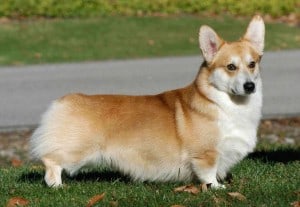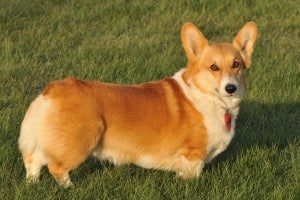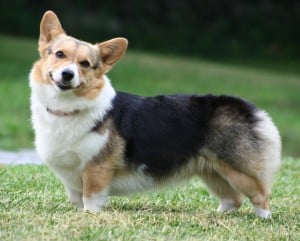
A bored Corgi can be a destructive Corgi. Further, they are independent thinkers, often amazing their owners with the way they puzzle things out, think “on the fly” and are by no means easily trainable. Corgi’s can have a tendency to get bored with repetition, so training must be varied to keep them interested. If not properly raised and socialized, injuries can happen to children in the home when the corgi attempts to herd them. Corgis are drovers, meaning the herd by going for the heels of their herding targets; this can translate to a calf, back of the knee or the entire ankle in a small enough child.

The name of the Corgi is Welsh, deriving either from “cor,” meaning, “dwarf” or from cur, meaning “watch” and “gi,” meaning “dog.” While a legend tells a tale of woodland fairies carrying the Corgi as a gift to the Welsh, it is far more likely that the breed was first brought to Wales around 1107, by the Flemish people who were settling there. It is closely related to the Cardigan Welsh Corgi. In fact, at what point the two breeds became distinct is unknown.
Many people think the Pembroke Welsh Corgi is a cross between the Cardigan and the Valhund, a Swedish breed brought to Wales by Viking invaders. The marking difference between Cardigans and Pembrokes is the lack of a tail on the Pembroke (it is docked), although other differences (including different structure and size) are apparent to the discriminating eye.

Pembroke Welsh Corgis may be prone to several genetic diseases that they should be screened for prior to anyone considering to breed them. PRA, von Willebrand’s disease, retinal dysplasia, hip and elbow dysplasia, and hypothyroidism are but a few. Other health problems that are sometimes seen in Pembroke Welsh Corgis include intervertebral disc protrusion, epilepsy and bladder stones.
Breeding and propagation of the Pembroke Welsh Corgi is described as relatively difficult because Corgi’s are one of the breeds, which can suffer from Dystocia during the whelping process. It is not uncommon for a PWC or CWC for that matter to require surgical assistance by means of cesarean section to deliver a litter. In addition it is very important to screen carefully for the genetic diseases discussed in Special Care before considering breeding any dogs or bitches.
